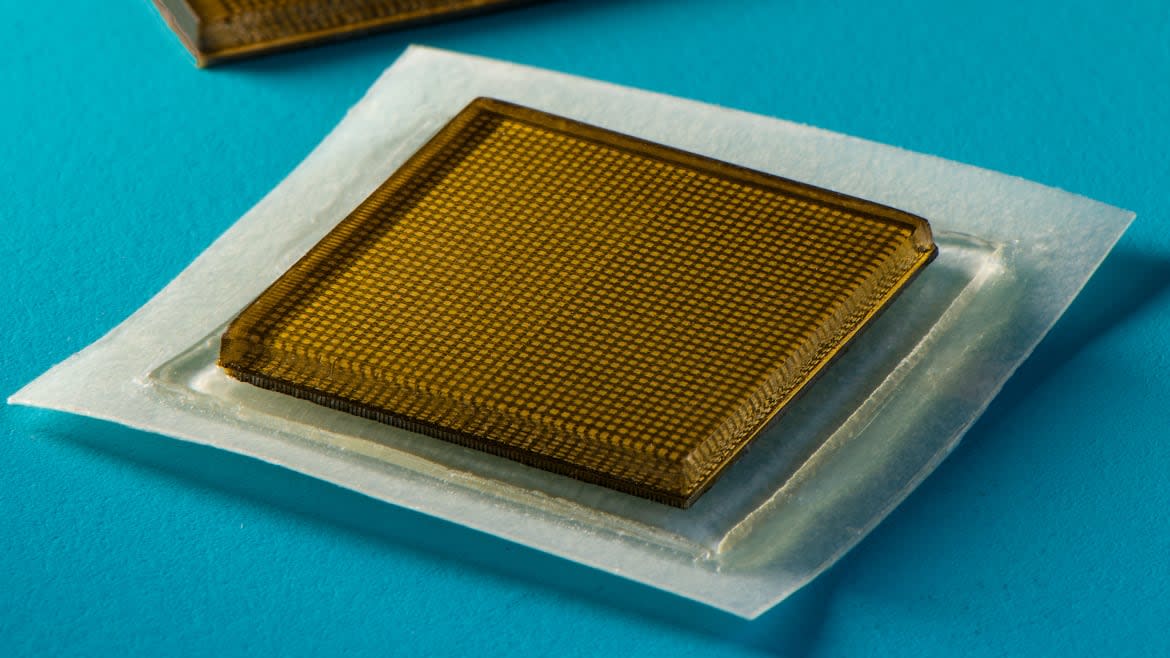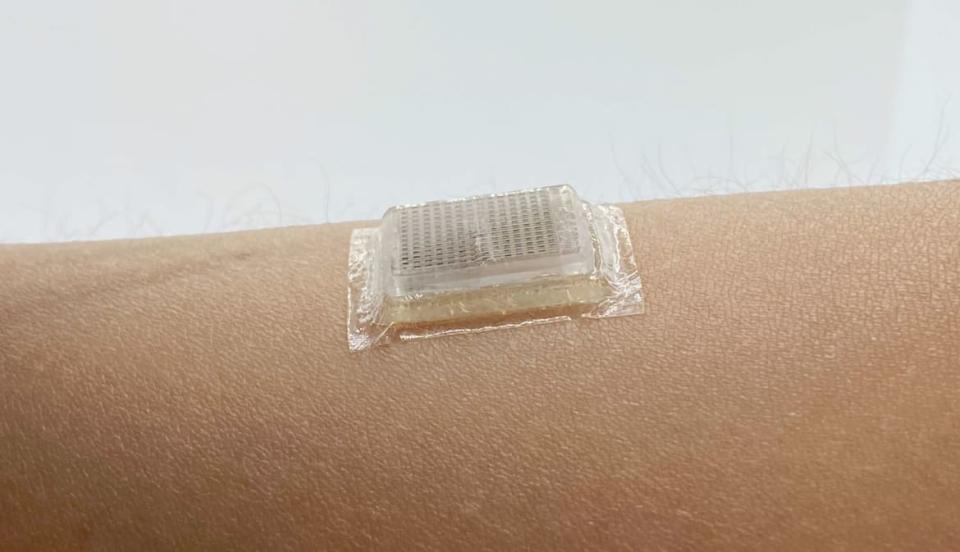This New Band-Aid Lets Doctors Look Inside Your Body

- Oops!Something went wrong.Please try again later.
Taking a peek inside your body is about to be as easy as sticking a band-aid on your skin. Scientists at MIT just developed a new kind of adhesive that can take ultrasound images of your internal organs, including the heart and lungs. It may one day replace the bulky, expensive equipment currently needed to run ultrasound procedures, and could make it easier and cheaper for clinicians to take a live look at a patient’s insides when time is of the essence.
The new device, presented in a new paper published in the journal Science on Thursday, is the size of a stamp, and capable of sticking to the skin for 48 hours. That means it can deliver live, high-resolution images of internal organs and tissue for a whole two days.
The clinching factor was the development of a new adhesive layer. Ultrasound works by transmitting sound waves into the body and scanning for echoes, which can be used to determine the visual structure of tissue and organs under the skin. A liquid gel makes the transmission of sound waves possible.

The device is capable of sticking on the skin for 48 hours.
The MIT team managed to develop a new kind of adhesive that’s super thin and super sticky. The adhesive sandwiches the middle layer: a solid, water-based gel that can transmit sound waves. It also prevents the gel from dehydrating while keeping the device attached to the skin without problem.
The researchers tested out the device on volunteers and were able to image everything as large as the stomach, to structures as small as major blood vessels. Volunteers basically lived out their day-to-day lives, and the device worked during activities as varied as sitting, sleeping, walking, jogging, and biking.
To be fair, the sticker doesn’t just work as is. They must be wired to instruments that can translate the sound wave data into something visual.
Still, the devices could still be used immediately in clinical settings where those types of instruments are readily available and make ultrasound easier to run over long periods of time (without requiring a technician to apply a gel and hold a probe for hours on end). Moreover, if the device can run wirelessly, it can be used to monitor patients in outpatient settings.
“We envision a few patches adhered to different locations on the body, and the patches would communicate with your cell phone, where AI algorithms would analyze the images on demand,” study coauthor and MIT engineer Xuanhe Zhao, said in a press release. “We believe we’ve opened a new era of wearable imaging: With a few patches on your body, you could see your internal organs.”
Got a tip? Send it to The Daily Beast here
Get the Daily Beast's biggest scoops and scandals delivered right to your inbox. Sign up now.
Stay informed and gain unlimited access to the Daily Beast's unmatched reporting. Subscribe now.

